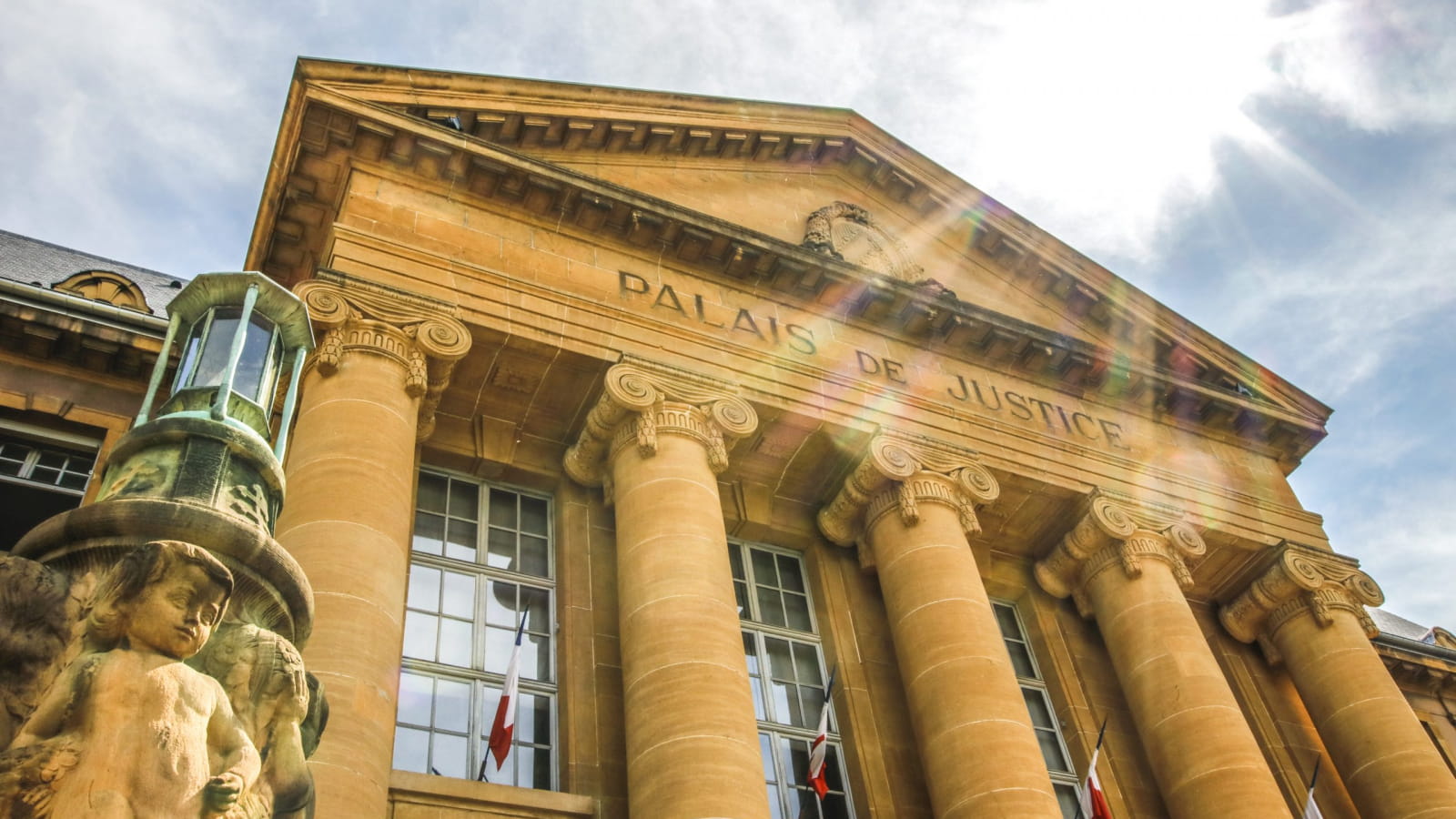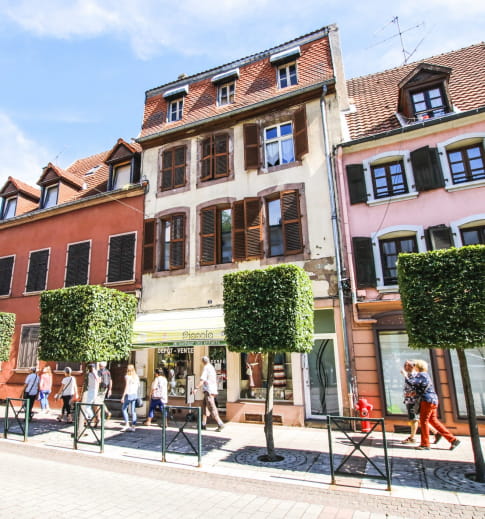
History of Sarreguemines
Sarreguemines reveals itself, through its little history!
With this series, we take you into the heart of the city of Sarreguemines, for an astonishing walk, punctuated with stories and anecdotes... Let yourself be surprised, your curiosity is your most beautiful flaw!

The casino
To explore the architectural heritage of Sarreguemines, our walk begins along the banks of the Saar. In front of us, the Casino des Faïenceries rises majestically and stands out in the landscape... The walls of the façade of this emblematic building are covered with bright and colourful tile panels. Paul de Geiger, director of the Faïenceries, had it built in 1878 to provide a meeting place for his employees. To get there, we take the pedestrian bridge over the marina and the Casino esplanade. All around, we also notice the presence of a pavilion with a porch and on the other side, a pretty and very poetic bandstand.

The theater
A few steps from the casino, still on the same bank, the old city theatre can still be seen. At the corner of the rue de la Cité and the rue du Maréchal Foch there used to be a small church... The architect Aloïs Berang bought it, destroyed the bell tower and converted the nave into a theatre in order to provide a place of entertainment for the people of Sarreguem at the time, when the town was expanding rapidly. Berang built this large Beaux-Arts style building in front of the theatre, embellished with small details: above the entrance, two statues hold masks of opera characters and the windows are decorated with heads or masks.

The Old Town Square
On the other side of the city, we find the atmosphere of the lively city centre with its shops and terraces. We head for the Old Square city, a small, somewhat hidden square accessible from the Rue de la Paix. On our left, the yellow multi-storey building now houses the Conservatory of Music, Dance and Drama. It used to be a private mansion, the 19th-century home of Alexandre de Geiger, director of the Faïenceries. Opposite us stands a small outbuilding of strange proportions with a metal panel bearing the inscription "La Goélette": this is the orangery where the plants were kept over winter. And on our left, a building with orange bricks and a carriage entrance that reveals traces of the stables. Three buildings that form a whole, three different styles.

Rue de France
From one street to another, styles and periods interact... Rue de France is probably our favourite because of its special atmosphere! It is one of the oldest streets in the town and was once known as the Rue Haute. You can still see authentic Lorraine houses built in the 17th and 18th centuries. And to immerse yourself in the history of these old buildings, a stop at number 31 of the street makes you look up to the sky: let's have fun counting the number of floors of this bourgeois house, and let's take a closer look at the windows under the roofs... The sloping roof structure seems to cover several levels, and for good reason! These Sarregueminois tried their hand at finance by buying up coveted goods en masse in order to speculate on their value, the stock market of yesteryear in a way...

The castle
The walk continues by taking a little height: towards the Castle, or at least the remains of it. Built in the 13th century, it protected the property of the Abbey of Saint-Denis and asserted the authority of the Duchy of Lorraine. From its ruins standing today, it is still difficult to make out its pentagonal shape, its three towers and its two gates. But the site offers a surprising view of the city's roofs!

Rue des Généraux Crémer
Further on, in the rue des Généraux Crémer, our eyes almost involuntarily stop at the façade of this former brasserie, now a restaurant. Just look up: between the ground floor and the first floor, you can see a frieze carved in stone representing the animals of our forests and rivers, a sort of tribute to their presence on our plates! Higher up, the floral decoration in Sarreguemin ceramic tiles, Allegory to Beer, underlines the beauty of this façade.

The courthouse
A few steps away, our walk ends with an illustration of Germanic architecture. The Palais de Justice in Sarreguemines is the last public building to be constructed during the German occupation, completed in 1913. This monumental building occupies a central place in the town's urban planning. Its golden shine, sparkling in the sunlight, is due to the Jaumont stone of which it is made. Its proportions are symmetrical and disproportionate, a sign of the desire to express the power and prestige of the city.
the different stages
on a map
Illustrated map of Sarreguemines
Discover Sarreguemines with this illustrated map!
view the Sarreguemines map







